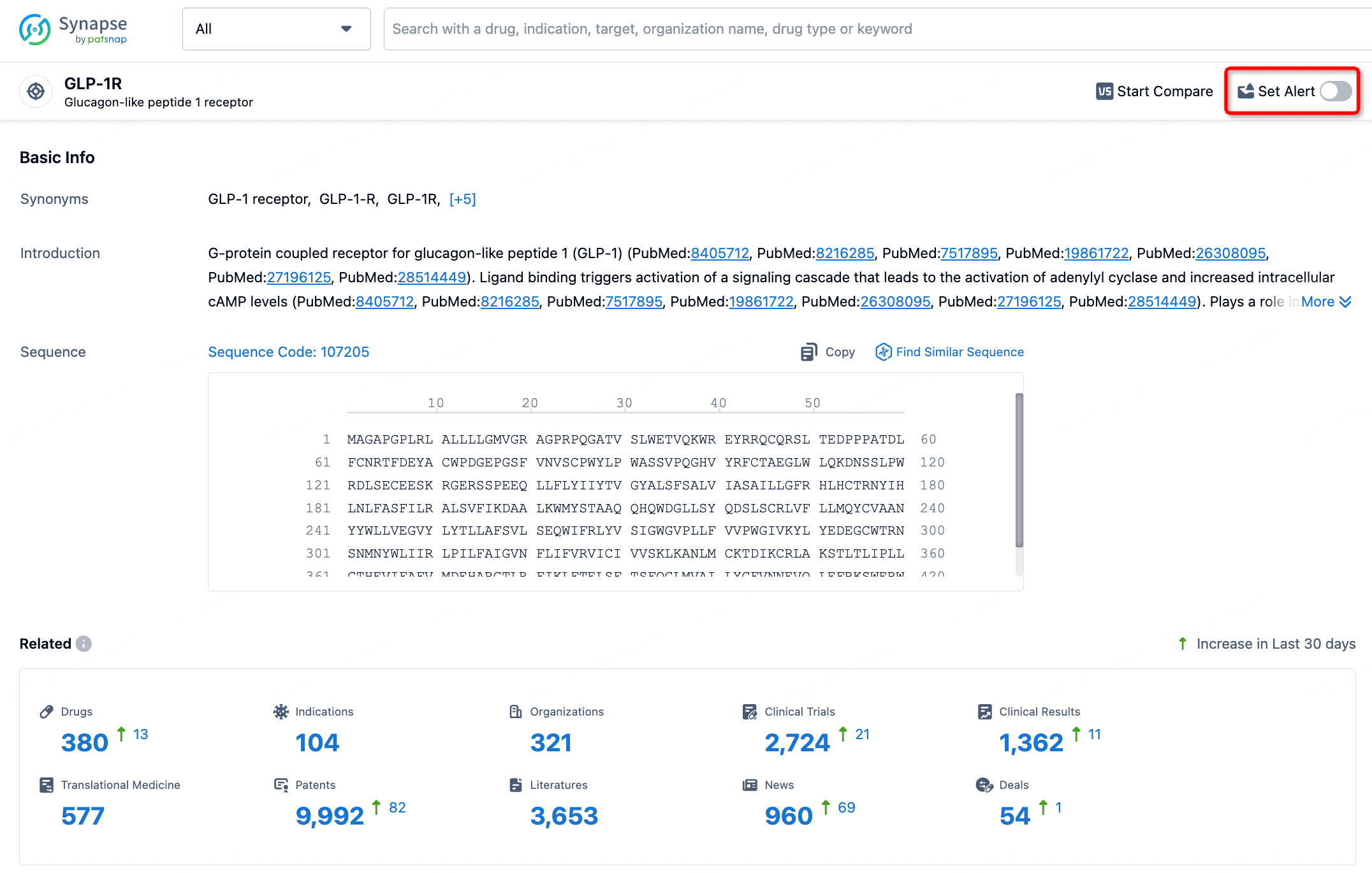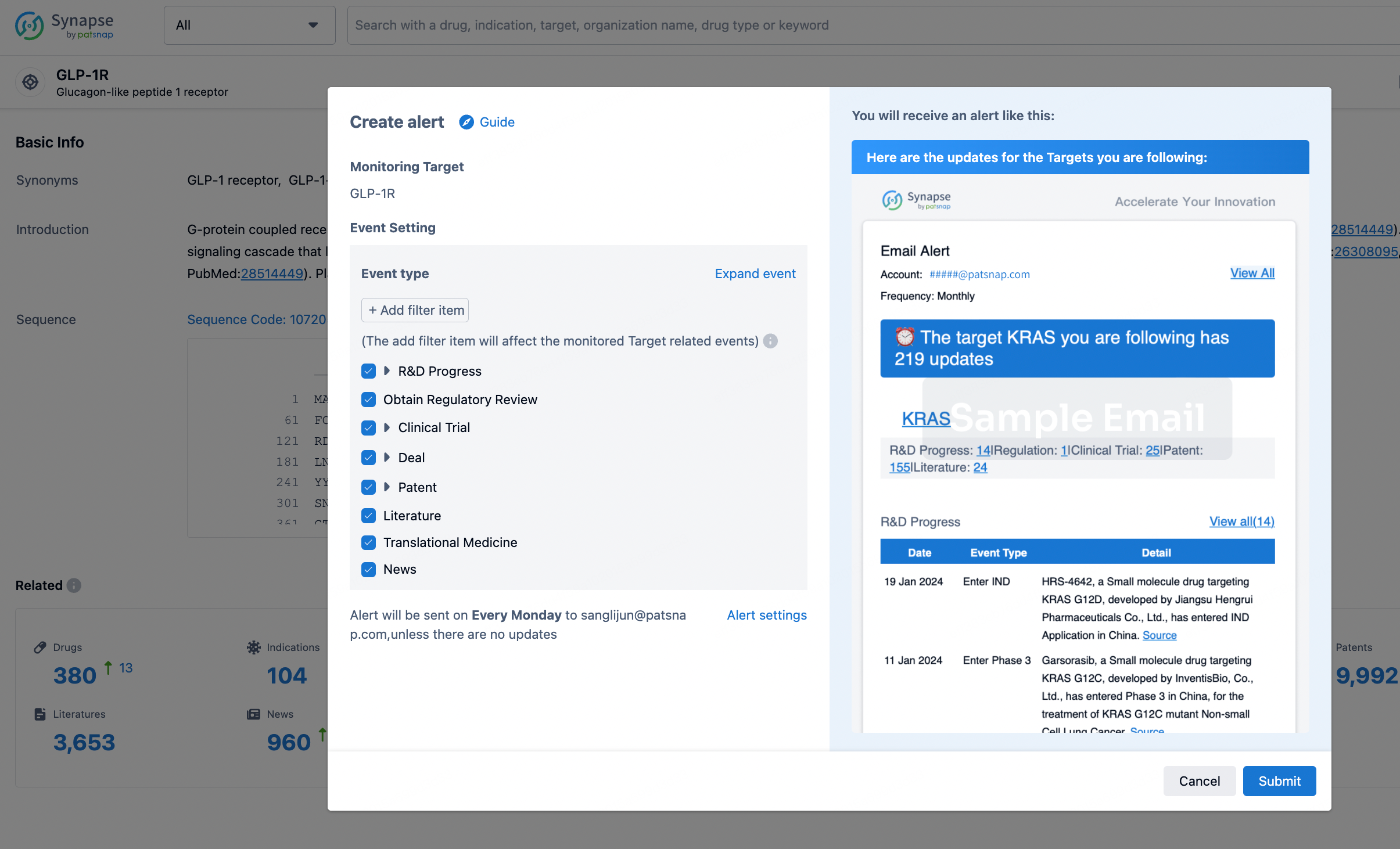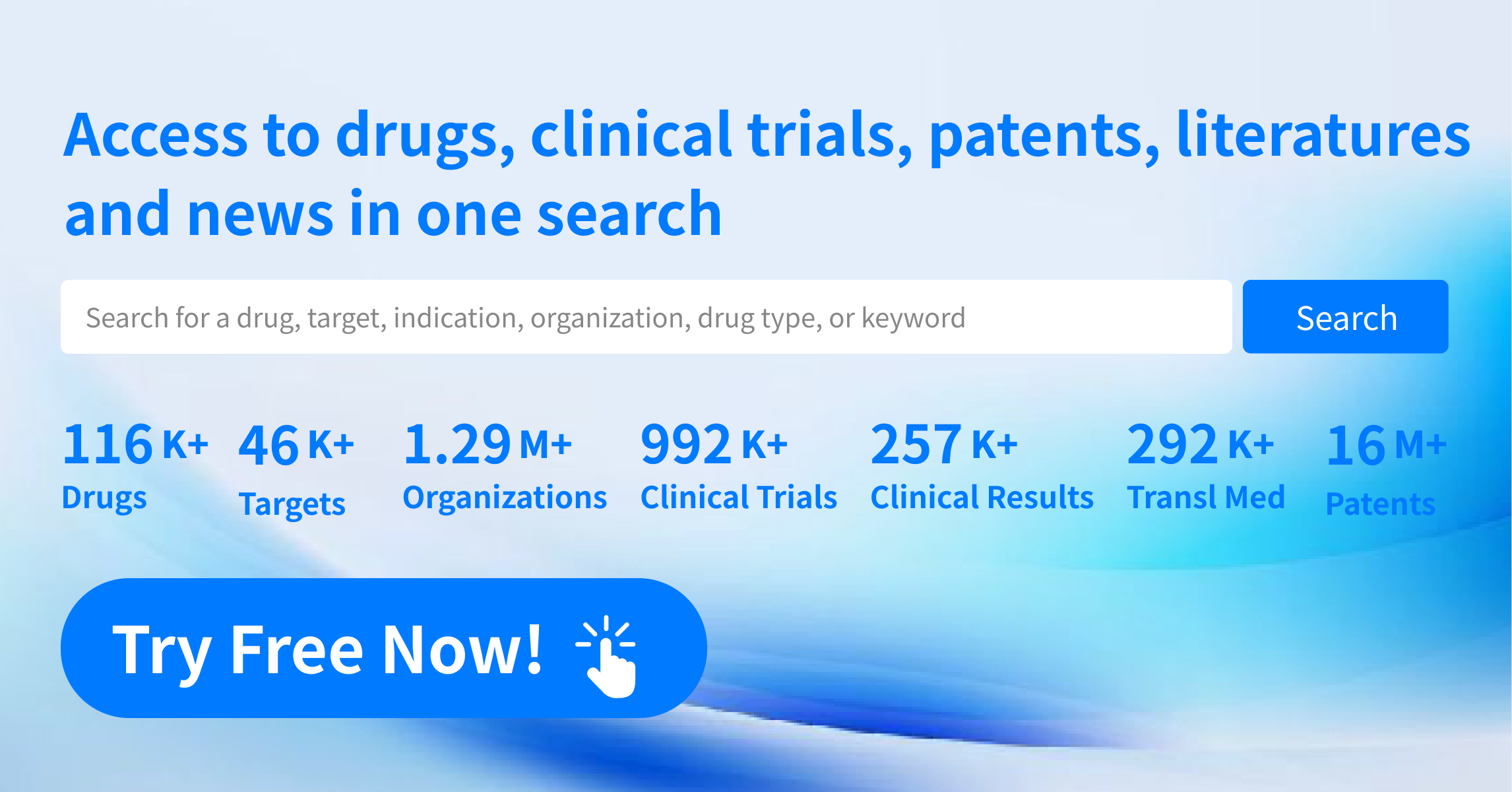Request Demo
What are CD36 modulators and how do they work?
21 June 2024
CD36 modulators represent an exciting frontier in biomedical research, offering potential therapeutic avenues for a variety of diseases. CD36, also known as the cluster of differentiation 36, is a multifunctional receptor involved in lipid metabolism, inflammation, and metabolic syndrome. This receptor is expressed on the surface of various cells, including macrophages, adipocytes, and endothelial cells, where it plays a crucial role in the uptake of fatty acids and the regulation of metabolic processes. Understanding how CD36 modulators work is essential to appreciate their therapeutic potential and the diseases they could impact.
CD36 is a scavenger receptor that binds to multiple ligands, such as oxidized low-density lipoproteins (oxLDL), long-chain fatty acids, and thrombospondin-1. By binding to these ligands, CD36 initiates a cascade of intracellular signaling pathways that influence cellular functions such as lipid uptake, foam cell formation, inflammation, and insulin signaling. Modulators of CD36 can either enhance or inhibit its activity, thereby affecting these pathways. For instance, inhibitors of CD36 can prevent the uptake of oxLDL by macrophages, reducing foam cell formation and thus the development of atherosclerotic plaques. On the other hand, activators of CD36 might be used to enhance fatty acid uptake and oxidation in tissues where this process is beneficial, such as muscle cells during increased energy demands.
The mechanisms through which CD36 modulators exert their effects are diverse and multifaceted. Inhibitors typically work by blocking the binding sites of ligands on the CD36 receptor, thereby preventing downstream signaling. This can be achieved through small molecules, peptides, or antibodies that specifically target CD36. Conversely, activators may enhance the receptor's affinity for its ligands or increase the expression of CD36 on the cell surface, promoting its activity. The choice of modulator depends on the desired therapeutic outcome and the specific disease context.
CD36 modulators have shown promise in several therapeutic areas. One of the most studied applications is in the treatment of cardiovascular diseases, particularly atherosclerosis. By inhibiting CD36, researchers aim to reduce the uptake of oxLDL by macrophages, which is a critical step in the formation of atherosclerotic plaques. This can potentially slow down or even reverse the progression of atherosclerosis, reducing the risk of heart attacks and strokes. Clinical trials are ongoing to evaluate the efficacy and safety of CD36 inhibitors in this context.
Another significant application of CD36 modulators is in metabolic disorders, such as obesity and type 2 diabetes. CD36 plays a role in lipid metabolism and insulin signaling, making it a target for interventions aimed at improving metabolic health. Inhibiting CD36 in adipose tissue, for instance, can reduce the storage of excess fatty acids, while activating CD36 in muscle cells can enhance fatty acid oxidation, improving insulin sensitivity and glucose metabolism. These approaches are being explored in preclinical and clinical studies to develop new treatments for metabolic syndrome and related conditions.
CD36 modulators are also being investigated for their potential in treating inflammatory diseases. The receptor's involvement in the uptake of pro-inflammatory ligands and the activation of inflammatory pathways makes it a target for reducing chronic inflammation. In diseases such as rheumatoid arthritis, targeting CD36 could help to modulate the inflammatory response and alleviate symptoms. Additionally, the role of CD36 in the immune response to infections is an area of active research, with potential implications for developing treatments for infectious diseases.
In summary, CD36 modulators offer a versatile and promising approach to treating a wide range of diseases. By influencing the activity of this multifunctional receptor, these modulators can impact lipid metabolism, inflammation, and metabolic processes, providing new therapeutic options for cardiovascular diseases, metabolic disorders, and inflammatory conditions. As research progresses, the development of CD36 modulators could represent a significant advancement in precision medicine, offering targeted treatments tailored to the specific needs of patients.
CD36 is a scavenger receptor that binds to multiple ligands, such as oxidized low-density lipoproteins (oxLDL), long-chain fatty acids, and thrombospondin-1. By binding to these ligands, CD36 initiates a cascade of intracellular signaling pathways that influence cellular functions such as lipid uptake, foam cell formation, inflammation, and insulin signaling. Modulators of CD36 can either enhance or inhibit its activity, thereby affecting these pathways. For instance, inhibitors of CD36 can prevent the uptake of oxLDL by macrophages, reducing foam cell formation and thus the development of atherosclerotic plaques. On the other hand, activators of CD36 might be used to enhance fatty acid uptake and oxidation in tissues where this process is beneficial, such as muscle cells during increased energy demands.
The mechanisms through which CD36 modulators exert their effects are diverse and multifaceted. Inhibitors typically work by blocking the binding sites of ligands on the CD36 receptor, thereby preventing downstream signaling. This can be achieved through small molecules, peptides, or antibodies that specifically target CD36. Conversely, activators may enhance the receptor's affinity for its ligands or increase the expression of CD36 on the cell surface, promoting its activity. The choice of modulator depends on the desired therapeutic outcome and the specific disease context.
CD36 modulators have shown promise in several therapeutic areas. One of the most studied applications is in the treatment of cardiovascular diseases, particularly atherosclerosis. By inhibiting CD36, researchers aim to reduce the uptake of oxLDL by macrophages, which is a critical step in the formation of atherosclerotic plaques. This can potentially slow down or even reverse the progression of atherosclerosis, reducing the risk of heart attacks and strokes. Clinical trials are ongoing to evaluate the efficacy and safety of CD36 inhibitors in this context.
Another significant application of CD36 modulators is in metabolic disorders, such as obesity and type 2 diabetes. CD36 plays a role in lipid metabolism and insulin signaling, making it a target for interventions aimed at improving metabolic health. Inhibiting CD36 in adipose tissue, for instance, can reduce the storage of excess fatty acids, while activating CD36 in muscle cells can enhance fatty acid oxidation, improving insulin sensitivity and glucose metabolism. These approaches are being explored in preclinical and clinical studies to develop new treatments for metabolic syndrome and related conditions.
CD36 modulators are also being investigated for their potential in treating inflammatory diseases. The receptor's involvement in the uptake of pro-inflammatory ligands and the activation of inflammatory pathways makes it a target for reducing chronic inflammation. In diseases such as rheumatoid arthritis, targeting CD36 could help to modulate the inflammatory response and alleviate symptoms. Additionally, the role of CD36 in the immune response to infections is an area of active research, with potential implications for developing treatments for infectious diseases.
In summary, CD36 modulators offer a versatile and promising approach to treating a wide range of diseases. By influencing the activity of this multifunctional receptor, these modulators can impact lipid metabolism, inflammation, and metabolic processes, providing new therapeutic options for cardiovascular diseases, metabolic disorders, and inflammatory conditions. As research progresses, the development of CD36 modulators could represent a significant advancement in precision medicine, offering targeted treatments tailored to the specific needs of patients.
How to obtain the latest development progress of all targets?
In the Synapse database, you can stay updated on the latest research and development advances of all targets. This service is accessible anytime and anywhere, with updates available daily or weekly. Use the "Set Alert" function to stay informed. Click on the image below to embark on a brand new journey of drug discovery!
AI Agents Built for Biopharma Breakthroughs
Accelerate discovery. Empower decisions. Transform outcomes.
Get started for free today!
Accelerate Strategic R&D decision making with Synapse, PatSnap’s AI-powered Connected Innovation Intelligence Platform Built for Life Sciences Professionals.
Start your data trial now!
Synapse data is also accessible to external entities via APIs or data packages. Empower better decisions with the latest in pharmaceutical intelligence.


